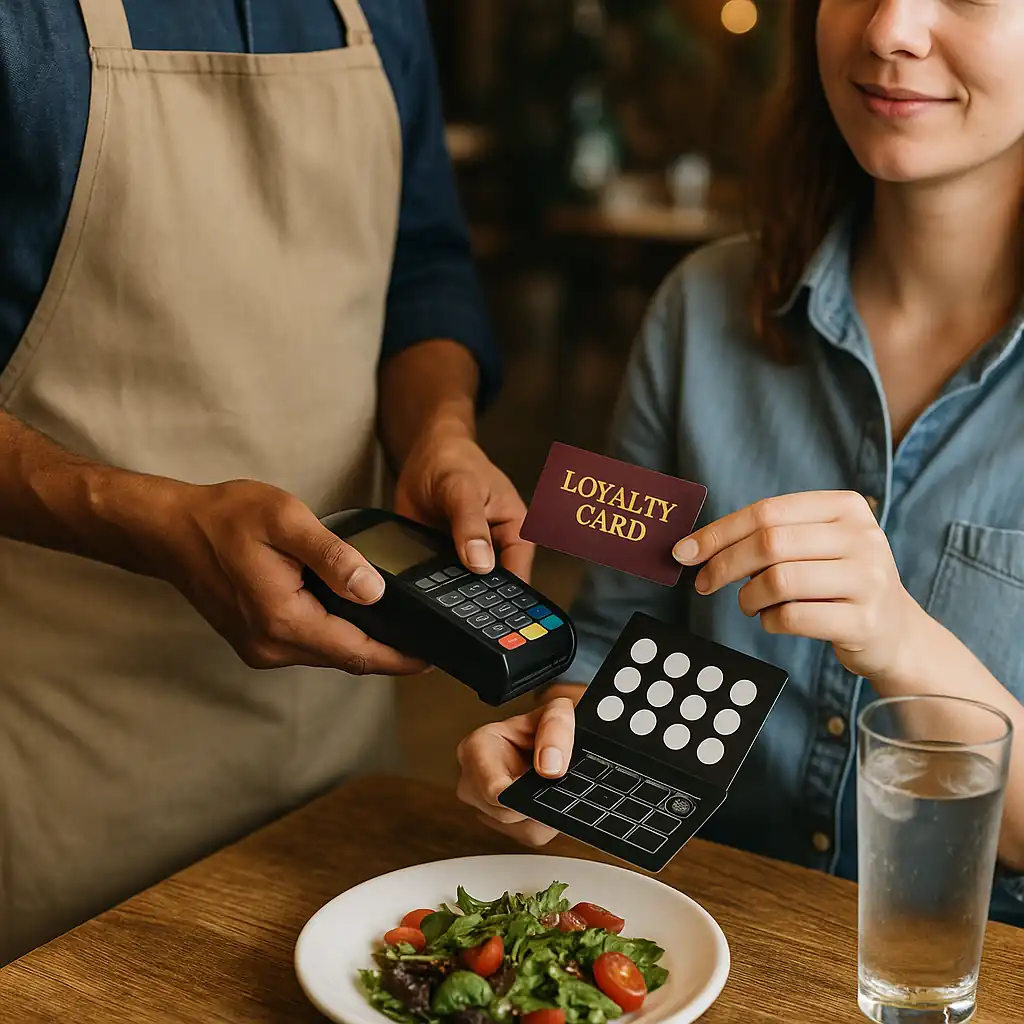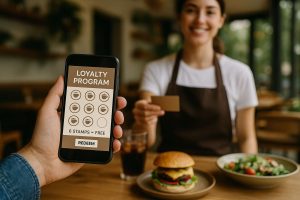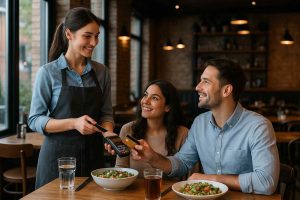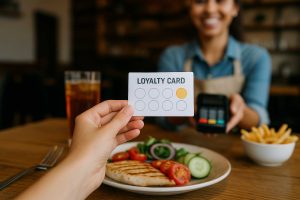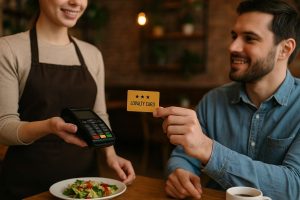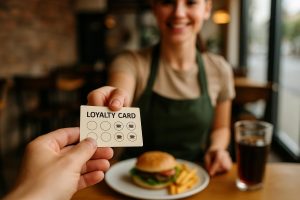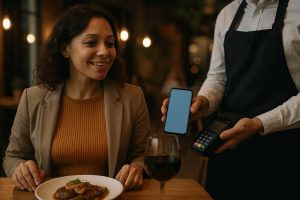In today’s hyper-competitive dining landscape, where every restaurant is fighting for a seat at the table—literally—customer loyalty isn’t just a nice-to-have, it’s a survival strategy. For restaurants aiming to thrive rather than merely survive, a well-crafted loyalty program is one of the most powerful tools in your marketing arsenal. Not only does it encourage repeat visits, but it also creates a community around your brand, deepens emotional connections, and turns casual diners into devoted ambassadors.
In this article, we explore creative, practical, and revenue-boosting restaurant loyalty program ideas you can implement to drive long-term customer retention. Whether you’re running a quick-service spot, a cozy café, or a fine-dining establishment, these ideas can be tailored to suit your clientele and brand identity.
Why Loyalty Programs Matter More Than Ever
Loyalty programs are no longer just about collecting punch cards or offering the occasional free coffee. They are about creating meaningful customer journeys that reward engagement, build trust, and offer true value.
Studies show that acquiring a new customer is up to five times more expensive than retaining an existing one. Moreover, loyal customers tend to spend 67% more than first-time guests. In short, loyalty pays—and with the right strategy, it can become your restaurant’s growth engine.
1. The Classic Points-Based System (Reimagined)
One of the most familiar—and effective—loyalty program models is the points-based system. Customers earn points for every dollar spent, which they can then redeem for discounts, free items, or exclusive experiences.
But don’t just stick with the standard. Modernize it by integrating your points system with your mobile app, enabling digital tracking, push notifications, and reward reminders. You can even gamify the experience with progress bars, levels, and badges to keep guests engaged.
For example, a customer who visits 10 times a month could unlock a new “VIP Diner” badge that gives them early access to new menu items.
2. Tiered Rewards for Superfans
People love status. That’s why tiered loyalty programs—think silver, gold, and platinum levels—work so well. The more customers spend or visit, the higher they climb. And the higher they climb, the better the perks.
This kind of program is great for encouraging frequency and larger ticket sizes. Each tier should offer progressively better rewards, such as:
- Priority seating
- Free upgrades
- Invitations to tasting events
- Personalized thank-you gifts
With each level, you not only recognize your top customers—you motivate them to reach the next level, boosting your bottom line in the process.
3. Birthday and Anniversary Rewards
Nothing says “we value you” like remembering a customer’s special day. A simple, automated reward for birthdays or anniversaries can leave a lasting impression. Whether it’s a free dessert, drink, or a discount coupon, these gestures show appreciation and create feel-good moments associated with your brand.
Make it even more memorable by personalizing the message with the customer’s name or offering them something unique based on their past orders.
4. Referral Rewards Program
Let your happy customers do your marketing. Offer points, discounts, or free items to customers who refer their friends. Even better: reward both the referrer and the new customer. This creates a win-win dynamic that fosters viral growth.
You can also track referrals via mobile apps or referral links and incentivize social media shares as part of your referral strategy. A branded “Refer a Friend” widget on your website can do wonders to spread the word.
5. Community-Based Loyalty Programs
Many diners love supporting local businesses that give back. Design a loyalty program that includes community impact.
Example: For every $10 spent, donate $1 to a local food bank, school program, or environmental cause. Customers can even choose the cause they want to support. This not only boosts loyalty—it strengthens your brand’s local identity and generates positive PR.
Restaurants that stand for something bigger than their menu often see a deeper emotional connection with their guests.
6. Seasonal Surprise Perks
Why wait for customer birthdays when you can surprise and delight all year long? Offer unexpected perks based on holidays, seasons, or special events. These surprise-and-delight moments create powerful emotional triggers and give customers another reason to visit during off-peak times.
Examples include:
- A free pumpkin dessert in October
- A bottle of bubbly on Valentine’s Day
- Exclusive summer items for loyalty members only
The key is to be consistent but unpredictable enough to maintain that element of surprise.
7. App-Exclusive Rewards
In a world where mobile is king, having an app isn’t optional—it’s essential. And one of the best ways to drive app downloads and usage is by offering exclusive loyalty rewards through your mobile platform.
This could include digital punch cards, app-only deals, or limited-time offers. Push notifications can keep customers in the loop and bring them back when foot traffic is low.
Plus, your app becomes a hub for customer engagement, allowing you to track behavior and tailor promotions accordingly.
8. Punch Cards 2.0
Physical punch cards may be outdated, but the principle still works. Digital punch cards—integrated with your POS or app—let customers track their progress toward a reward and get a little thrill every time they check in.
Example: Buy 9 tacos, get the 10th free. Add some flair with custom messages like “Only 3 tacos to go!” or “You’re 1 step from free guac!”
This method is especially effective for fast-casual restaurants or coffee shops with frequent repeat customers.
9. Subscription or VIP Dining Clubs
Another powerful idea is to launch a paid loyalty program. Offer VIP access to:
- Exclusive tasting events
- Secret menus
- Monthly discounts
- Priority seating or reservations
For example: A customer pays $9.99/month and receives a free appetizer every visit plus access to members-only promotions.
A paid program generates recurring revenue and positions your brand as premium. It also gives customers a reason to come back regularly to get the most value from their subscription.
10. Gamified Challenges
Gamification works because it taps into our natural desire to win, compete, and be rewarded. Create monthly or seasonal challenges where customers can earn prizes by completing specific actions.
Challenges could include:
- Visiting 5 times in a month
- Trying 3 new menu items
- Bringing a friend on their next visit
Each completed challenge could unlock digital badges, exclusive offers, or entries into a larger giveaway. These programs keep customers engaged and encourage ongoing participation.
11. Personalized Loyalty Offers
In today’s digital age, personalization isn’t just a bonus—it’s an expectation. If your loyalty program treats all customers the same, you’re missing an opportunity to build stronger relationships.
Modern CRM tools and loyalty platforms allow you to track customer behavior: what they order, how often they visit, when they typically dine, and how much they spend. Use this data to send personalized offers based on preferences.
For instance:
- A customer who frequently orders burgers could get an exclusive “Burger of the Month” deal.
- A brunch lover might receive a weekend-only offer.
Personalization shows your guests that you notice them—and that you care.
12. Partnerships with Local Businesses
Loyalty doesn’t have to live only within your restaurant. Consider partnering with nearby businesses—like gyms, coffee shops, boutiques, or co-working spaces—to create cross-promotional loyalty rewards.
For example:
- Dine 3 times at your restaurant and get 10% off at a partnered yoga studio.
- Buy a dessert and receive a voucher for a nearby bookstore.
These partnerships enhance customer value while expanding your reach into new, but aligned, audiences. It’s a strategic way to build community loyalty beyond your walls.
13. Limited-Time Loyalty Campaigns
Keeping your loyalty program dynamic is essential. Try launching limited-time campaigns that offer bonus points, exclusive items, or double-reward days.
Example: “Taco Tuesdays = Double Points All Month.”
By changing up the structure and introducing urgency, you create excitement and boost participation. Customers are more likely to dine now, not later, when there’s a time-sensitive perk involved.
These campaigns also give you seasonal flexibility and a chance to test new incentives without changing your core program.
14. Use of NFC and QR Code Technology
Technology can enhance both the ease and fun of using your loyalty program. By incorporating QR codes or NFC (Near Field Communication), customers can simply scan their phone at the table or register to track purchases and redeem rewards.
Not only does this make the process faster, but it also reduces staff burden. QR codes can also lead to app downloads, surveys, feedback requests, or birthday signup forms.
It’s a seamless blend of convenience and engagement.
15. Exclusive Content Access
Loyalty isn’t just about discounts—it’s also about exclusivity. Offer your most loyal customers access to behind-the-scenes content, cooking classes, recipe videos, or sneak peeks of new dishes.
This strategy works especially well if your restaurant has a strong chef personality or brand identity. You’re not just selling food—you’re selling an experience, a lifestyle.
Even something as simple as a “loyalty-only” email newsletter featuring kitchen stories and new creations can make fans feel like insiders.
16. Feedback-for-Rewards
Make your loyalty program work for your improvement. Ask customers to leave feedback after their visit and reward them for it—whether through points, coupons, or small gifts.
This approach serves two purposes:
- You gather real-time feedback that helps you fix problems before they grow.
- Customers feel heard and more connected to your brand.
Integrate this into your app or follow-up emails, and make the process frictionless. A happy guest who knows their opinion counts is more likely to return.
17. Loyalty Based on Social Sharing
Let your customers be your influencers. Encourage them to share photos or reviews of their meal on social media, and reward them for the exposure.
For example:
- Post a dish with your hashtag and earn 25 loyalty points.
- Tag the restaurant in a story and receive a free dessert.
This user-generated content builds trust with potential customers, fuels word-of-mouth marketing, and adds a social layer to your loyalty strategy.
18. Family or Group Loyalty Plans
Restaurants that cater to families or group diners can offer multi-user loyalty benefits. Parents, kids, and even coworkers can earn shared rewards when visiting together.
You might design “Family Meal Points” or “Team Lunch Tiers,” where cumulative group spending leads to rewards like:
- A free family dessert tray after 5 group visits
- A reserved VIP booth for group loyalty members
This format encourages larger parties and positions your restaurant as a favorite for gatherings and celebrations.
19. Geo-Fenced Promotions for Loyalty Members
Use geo-fencing technology to send real-time offers when customers are near your location. If someone in your loyalty program walks within a few blocks of your restaurant, they could receive a push notification like:
“Hi Jamie! Hungry? Show this message for a free drink with your lunch today only.”
This targeted outreach creates a sense of immediacy and exclusivity, driving foot traffic and improving location-based marketing.
20. Data-Driven Optimization: Measure What Matters
A loyalty program is only as good as the results it delivers. To ensure success, you must track and optimize key metrics, such as:
- Program sign-up rates
- Reward redemption rates
- Repeat visit frequency
- Customer lifetime value
- Average order size of loyalty vs. non-loyalty members
By understanding what works and what doesn’t, you can adjust your offers, streamline your structure, and maximize ROI. Many modern POS and CRM systems offer built-in analytics to help you track performance in real time.
21. Early Access to New Menu Items
Make your loyal customers feel like insiders by giving them early access to limited-edition dishes, drinks, or seasonal menus. This taps into their curiosity and makes them feel valued, encouraging them to return just to try what others can’t.
You can announce this through email, app notifications, or in-store signs exclusive to loyalty members. Not only does this boost engagement, but it also provides a testing ground for new items before a full rollout.
Customers love being “the first to try something,” and this sense of exclusivity reinforces their connection to your brand.
22. Host Loyalty Member Events
Transform your loyalty program into a real-world community by hosting exclusive events for members. These could be:
- Private wine tastings
- Meet-the-chef dinners
- Cooking demos
- Pre-opening previews of new locations
Even small gatherings, like loyalty-only happy hours or invite-only brunches, can turn customers into brand advocates. Events give people a reason to engage beyond food—and they often share the experience on social media, creating organic buzz.
23. Cashback-Style Reward Credits
Instead of (or in addition to) points, offer a cashback-style reward in the form of store credit. For example, a diner earns $5 in credit for every $50 spent, which they can use on their next visit.
This gives customers tangible, immediate value and encourages return visits to redeem the credit. It’s psychologically powerful because it frames spending as an investment that pays off.
Plus, these small credits often lead to larger purchases, increasing average ticket size.
24. Surprise & Delight Moments
Go beyond structured rewards and incorporate unexpected thank-yous that make customers smile. For instance, a guest might receive a surprise message on your app: “Today’s your lucky day—your coffee is on the house!”
These gestures don’t need to be big. A free appetizer, a thank-you note on the plate, or a personalized dessert can create emotional loyalty—a deeper form of connection that lasts longer than transactional perks.
It’s about making the customer feel special in the moment, not just in a spreadsheet.
25. Loyalty Integration with Online Ordering
As more customers order online, it’s critical that your loyalty program is fully integrated across dine-in, takeout, and delivery channels. Make sure members can earn and redeem rewards no matter how they choose to interact with your restaurant.
This eliminates friction and encourages usage across all touchpoints. Consider offering double points on online orders during off-peak hours to drive traffic when it’s needed most.
Unified loyalty experiences help you gather more data and provide a consistent customer journey that supports growth on and off premises.
26. Gamified Menu Exploration
Encourage customers to try more of your menu by turning it into a game. Offer rewards when they order items from different categories—like appetizers, entrees, and desserts—or when they try dishes they haven’t ordered before.
Example: “Complete the Chef’s Challenge—Try 5 different items this month and earn a free entrée.”
This strategy not only boosts average spend and menu exposure but also turns the dining experience into a fun discovery journey. Gamification drives engagement, especially among younger diners who enjoy experiences with a playful twist.
27. Eco-Friendly Loyalty Rewards
Tap into the growing demand for sustainability by offering eco-conscious rewards. For example:
- Give extra points to customers who bring reusable containers or cups.
- Offer plant-based rewards, such as a free vegan dessert after 5 eco-friendly orders.
- Allow loyalty members to convert points into donations for environmental causes.
This positions your restaurant as both modern and responsible, and appeals to guests who care about making an impact. Loyalty with a purpose resonates more deeply, creating emotional ties and brand affinity beyond discounts.
Building Loyalty That Lasts
A restaurant loyalty program isn’t just a discount engine—it’s a relationship builder. When done right, it increases frequency, raises check sizes, builds emotional connection, and fuels long-term growth.
But the key is consistency. Your program must be simple to use, engaging, and updated regularly. The more effortless and rewarding it feels, the more your customers will keep coming back—not just for the food, but for the full experience.
Start Small, Scale Smart
If you’re just starting out with loyalty, begin with a simple structure that fits your operations. A basic points system or birthday reward program can be enough to learn what your customers love. As your data grows and customer engagement increases, you can layer on personalization, exclusive content, and tech-driven features.
Above all, remember: loyalty is earned, not given. Make each interaction matter, reward generously, and create moments your customers will want to return for—and tell others about.
With the right strategy, your loyalty program won’t just retain customers. It will transform them into lifelong fans.



